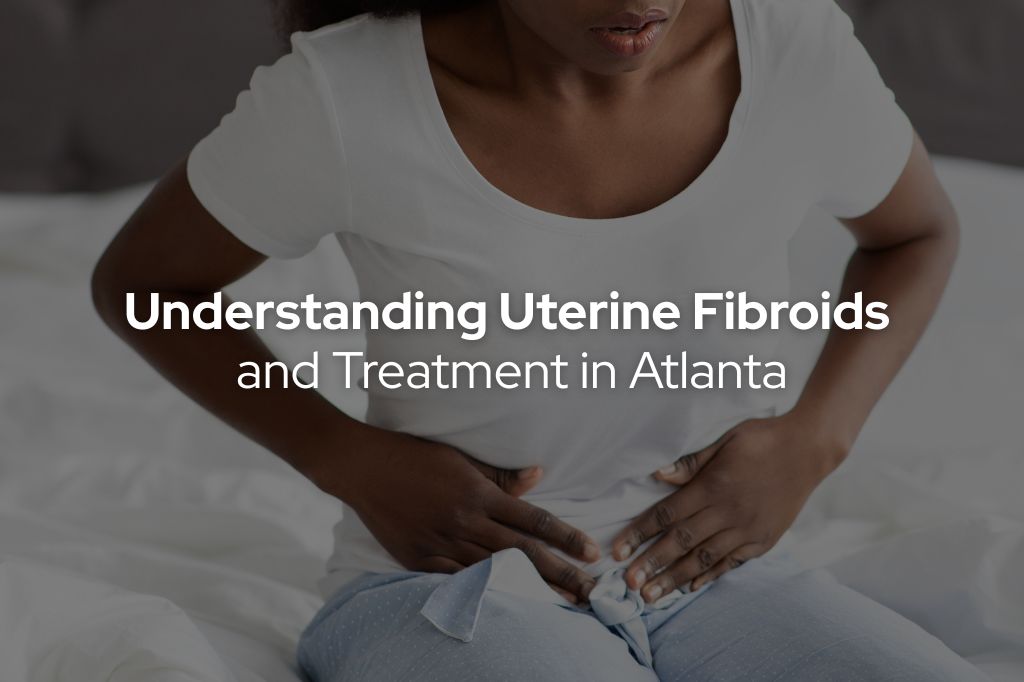Approximately 80% of women will get uterine fibroids before turning 50. Even though fibroids are a common occurrence, many people don’t fully understand what fibroids are, what symptoms to look out for, and what treatment options are available. Dr. Kevin Carson, the founding physician of the Georgia Vascular Institute and Georgia Fibroid Treatment Center in Atlanta and a specialist in uterine fibroid treatment for over 25 years, helps patients find long-lasting relief from their fibroids. In this article, Dr. Carson shares frequently asked questions about fibroids that he encounters in his practice.
Frequently Asked Questions (FAQ) about Fibroids
What are Uterine Fibroids?
Uterine fibroids are benign pelvic tumors that occur in the uterus. They can occur in the lining of the uterus (submucosal), in the muscle wall of the uterus (intramural), on the outside of the uterus (subserosal), or hanging off the uterus like a lollipop (pedunculated). Uterine fibroids vary in size. Some are very small and undetectable without imaging, while others can grow very large, changing the shape of the uterus. They can occur as single growths or clusters.
What Causes Uterine Fibroids?
The exact cause of uterine fibroids is unknown, but hormones may play a part in their development. Fibroids have receptors for estrogen and progesterone, so to some degree, these hormones can stimulate their growth. As hormones naturally decrease with menopause, fibroids may shrink but they will not go away.
Are Uterine Fibroids Cancerous?
Most uterine fibroids are benign (non-cancerous) and will not develop into cancer. The risk that a fibroid is cancerous is less than 1 in 1,000 cases. If it is cancerous, it is called a Leiomyosarcoma.
Who is At Risk of Developing Fibroids?
According to a survey conducted by The Harris Poll on behalf of the Society of Interventional Radiology (SIR), almost three-quarters (72%) of women surveyed do not know that they are at risk of developing fibroids, but the reality is that anyone with a uterus is at risk.
However, fibroids are known to disproportionately affect women of African descent, though the reasons for this disparity remain unclear. According to research published by the National Institutes of Health, “fibroids are more common and more severe among African American women.” The study also found that Black women are two to three times more likely to need surgical treatment for fibroids, and their hospitalization rates for the condition are three times higher.
Women who have a higher BMI (Body Mass Index) and a vitamin D deficiency are also at an increased risk of developing fibroids.
What are the Symptoms of Uterine Fibroids?
Fibroid symptoms can range from asymptomatic (nonexistent symptoms) to seriously life-disrupting. Women who have symptoms may experience one or more of the following:
- Heavy or prolonged menstrual bleeding
- Pelvic pain or pressure
- Constant fatigue or weakness; no energy to do anything with their family or partner
- Constipation
- Frequent urination or difficulty emptying the bladder
- Back or leg pain
- Craving to eat ice; comes from lack of iron/iron-deficiency anemia
- Bloating or an enlarged abdomen
- Difficulty with fertility or pregnancy complications
If you are experiencing changes in your cycle or ongoing pelvic discomfort, we recommend you discuss this with your trusted doctor or contact the Georgia Fibroid Treatment Center in Atlanta.
Are there Fibroid Treatment Options that Preserve Fertility?
Before we discuss fibroid treatment options that preserve fertility, let’s talk about the hysterectomy, which was once the go-to solution for fibroids. A hysterectomy is the removal of the uterus and any fibroids that exist. This major surgery will cure the fibroid issue, but women who have this done will no longer be able to have children. A hysterectomy is permanent and cannot be reversed.
For women who would like to preserve their fertility and/or try less invasive treatment options, the following options are available, depending on symptoms, age, and reproductive goals:
Uterine Fibroid Embolization (UFE): A minimally invasive, non-surgical procedure performed by an interventional radiologist who uses image guidance to inject tiny particles into the uterine arteries to block blood flow to the fibroids, causing them to shrink over time. UFE is performed as an outpatient procedure, with recovery time typically being less than one week. Dr. Carson can perform a UFE treatment at the Georgia Vascular Institute’s Atlanta Fibroid Treatment Center. The majority of his patients experience long-term relief of symptoms after a successful UFE procedure.
Myomectomy: A surgical procedure that removes fibroids but leaves the uterus intact. This can be performed in several ways, including laparoscopically, hysteroscopically, or through an abdominal incision, depending on the size and location of the fibroids.
Watchful Waiting: In some cases, small fibroids that are asymptomatic and not impacting quality of life, can be monitored over time with regular checkups.
The Bottomline about Uterine Fibroids
Symptoms of fibroids can disrupt your emotional and physical health, but there are fibroid treatment options in Atlanta that can provide long-lasting relief. The key is to recognize your symptoms, discuss them with your doctor, and work with your doctor to find the best treatment plan for your life path. And remember, if you are diagnosed with fibroids, a hysterectomy is not your only choice.
If you have fibroids and are interested in learning more about uterine fibroid treatment in Atlanta or the Uterine Fibroid Embolization procedure by Dr. Kevin Carson, call us at (770) 506-4007 or request an appointment here.

